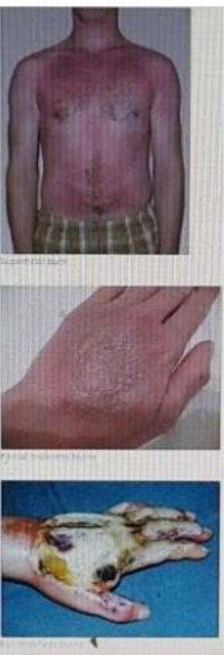C. Apply wound dressing, bandage and discharge – Explanation
as a superficial burn.
Most superficial burns if dressing is required can be managed with a simple non-
adherent dressing plus an absorbent layer (e.g. a dressing pad) on top and a bandage
to secure the dressing. He can then be managed as an outpatient with twice a week
wound inspection.
If there was any doubt of this burn requiring a referral to the specialised burn unit, the
ED doctor could always take a photo, and email it to the burns unit nurse or doctor and
they would advise appropriately over the phone while the patient waits in ED for a
decision on management.
Other things to take note is to check the tetanus status of the burnt victim and give
tetanus toxoid if required. This is because burns are considered tetanus prone wounds
especially in cases like this where it involves a barbeque pit in the park.
PARTIAL AND FULL THICKNESS BURNS
Superficial (epidermal) burns are red and painful but do not blister.
Partial thickness burn ranges from blistering to deep dermal burn. The appearance is
shiny and sensation is intact. Capillary refill blanches.
Full thickness burn have a leathery or waxy appearance. They may be white, brown
or black in colour. There is no blisters and sensation is lost so they do not feel any pain.
There is no capillary refill.

